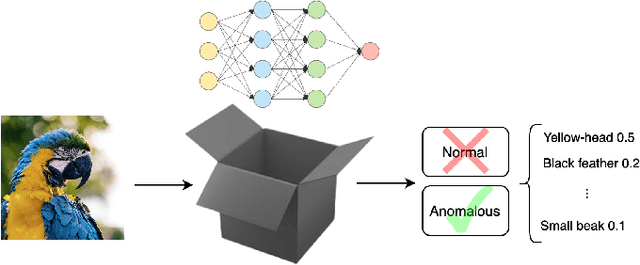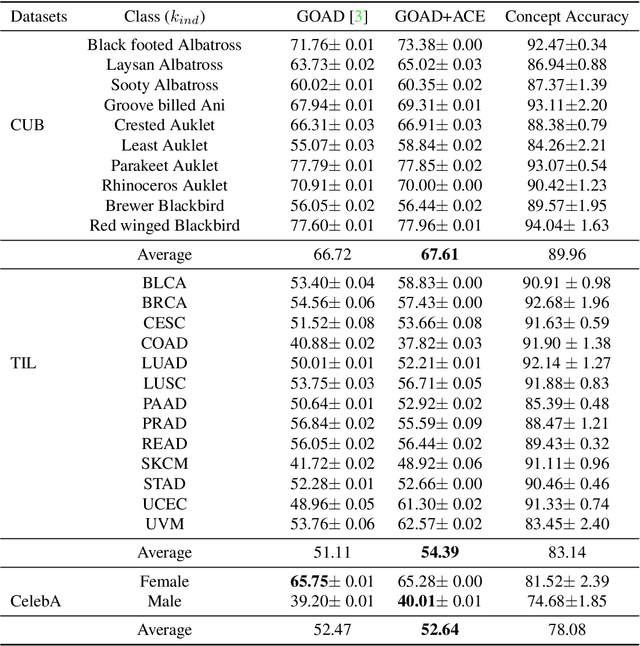Ivaxi Sheth
Causality Is Key to Understand and Balance Multiple Goals in Trustworthy ML and Foundation Models
Feb 28, 2025Abstract:Ensuring trustworthiness in machine learning (ML) systems is crucial as they become increasingly embedded in high-stakes domains. This paper advocates for the integration of causal methods into machine learning to navigate the trade-offs among key principles of trustworthy ML, including fairness, privacy, robustness, accuracy, and explainability. While these objectives should ideally be satisfied simultaneously, they are often addressed in isolation, leading to conflicts and suboptimal solutions. Drawing on existing applications of causality in ML that successfully align goals such as fairness and accuracy or privacy and robustness, this paper argues that a causal approach is essential for balancing multiple competing objectives in both trustworthy ML and foundation models. Beyond highlighting these trade-offs, we examine how causality can be practically integrated into ML and foundation models, offering solutions to enhance their reliability and interpretability. Finally, we discuss the challenges, limitations, and opportunities in adopting causal frameworks, paving the way for more accountable and ethically sound AI systems.
Safety is Essential for Responsible Open-Ended Systems
Feb 06, 2025Abstract:AI advancements have been significantly driven by a combination of foundation models and curiosity-driven learning aimed at increasing capability and adaptability. A growing area of interest within this field is Open-Endedness - the ability of AI systems to continuously and autonomously generate novel and diverse artifacts or solutions. This has become relevant for accelerating scientific discovery and enabling continual adaptation in AI agents. This position paper argues that the inherently dynamic and self-propagating nature of Open-Ended AI introduces significant, underexplored risks, including challenges in maintaining alignment, predictability, and control. This paper systematically examines these challenges, proposes mitigation strategies, and calls for action for different stakeholders to support the safe, responsible and successful development of Open-Ended AI.
MedG-KRP: Medical Graph Knowledge Representation Probing
Dec 17, 2024Abstract:Large language models (LLMs) have recently emerged as powerful tools, finding many medical applications. LLMs' ability to coalesce vast amounts of information from many sources to generate a response-a process similar to that of a human expert-has led many to see potential in deploying LLMs for clinical use. However, medicine is a setting where accurate reasoning is paramount. Many researchers are questioning the effectiveness of multiple choice question answering (MCQA) benchmarks, frequently used to test LLMs. Researchers and clinicians alike must have complete confidence in LLMs' abilities for them to be deployed in a medical setting. To address this need for understanding, we introduce a knowledge graph (KG)-based method to evaluate the biomedical reasoning abilities of LLMs. Essentially, we map how LLMs link medical concepts in order to better understand how they reason. We test GPT-4, Llama3-70b, and PalmyraMed-70b, a specialized medical model. We enlist a panel of medical students to review a total of 60 LLM-generated graphs and compare these graphs to BIOS, a large biomedical KG. We observe GPT-4 to perform best in our human review but worst in our ground truth comparison; vice-versa with PalmyraMed, the medical model. Our work provides a means of visualizing the medical reasoning pathways of LLMs so they can be implemented in clinical settings safely and effectively.
CausalGraph2LLM: Evaluating LLMs for Causal Queries
Oct 21, 2024Abstract:Causality is essential in scientific research, enabling researchers to interpret true relationships between variables. These causal relationships are often represented by causal graphs, which are directed acyclic graphs. With the recent advancements in Large Language Models (LLMs), there is an increasing interest in exploring their capabilities in causal reasoning and their potential use to hypothesize causal graphs. These tasks necessitate the LLMs to encode the causal graph effectively for subsequent downstream tasks. In this paper, we propose a comprehensive benchmark, \emph{CausalGraph2LLM}, encompassing a variety of causal graph settings to assess the causal graph understanding capability of LLMs. We categorize the causal queries into two types: graph-level and node-level queries. We benchmark both open-sourced and closed models for our study. Our findings reveal that while LLMs show promise in this domain, they are highly sensitive to the encoding used. Even capable models like GPT-4 and Gemini-1.5 exhibit sensitivity to encoding, with deviations of about $60\%$. We further demonstrate this sensitivity for downstream causal intervention tasks. Moreover, we observe that LLMs can often display biases when presented with contextual information about a causal graph, potentially stemming from their parametric memory.
LLM4GRN: Discovering Causal Gene Regulatory Networks with LLMs -- Evaluation through Synthetic Data Generation
Oct 21, 2024Abstract:Gene regulatory networks (GRNs) represent the causal relationships between transcription factors (TFs) and target genes in single-cell RNA sequencing (scRNA-seq) data. Understanding these networks is crucial for uncovering disease mechanisms and identifying therapeutic targets. In this work, we investigate the potential of large language models (LLMs) for GRN discovery, leveraging their learned biological knowledge alone or in combination with traditional statistical methods. We develop a task-based evaluation strategy to address the challenge of unavailable ground truth causal graphs. Specifically, we use the GRNs suggested by LLMs to guide causal synthetic data generation and compare the resulting data against the original dataset. Our statistical and biological assessments show that LLMs can support statistical modeling and data synthesis for biological research.
Hypothesizing Missing Causal Variables with LLMs
Sep 04, 2024Abstract:Scientific discovery is a catalyst for human intellectual advances, driven by the cycle of hypothesis generation, experimental design, data evaluation, and iterative assumption refinement. This process, while crucial, is expensive and heavily dependent on the domain knowledge of scientists to generate hypotheses and navigate the scientific cycle. Central to this is causality, the ability to establish the relationship between the cause and the effect. Motivated by the scientific discovery process, in this work, we formulate a novel task where the input is a partial causal graph with missing variables, and the output is a hypothesis about the missing variables to complete the partial graph. We design a benchmark with varying difficulty levels and knowledge assumptions about the causal graph. With the growing interest in using Large Language Models (LLMs) to assist in scientific discovery, we benchmark open-source and closed models on our testbed. We show the strong ability of LLMs to hypothesize the mediation variables between a cause and its effect. In contrast, they underperform in hypothesizing the cause and effect variables themselves. We also observe surprising results where some of the open-source models outperform the closed GPT-4 model.
LLM Task Interference: An Initial Study on the Impact of Task-Switch in Conversational History
Feb 28, 2024



Abstract:With the recent emergence of powerful instruction-tuned large language models (LLMs), various helpful conversational Artificial Intelligence (AI) systems have been deployed across many applications. When prompted by users, these AI systems successfully perform a wide range of tasks as part of a conversation. To provide some sort of memory and context, such approaches typically condition their output on the entire conversational history. Although this sensitivity to the conversational history can often lead to improved performance on subsequent tasks, we find that performance can in fact also be negatively impacted, if there is a task-switch. To the best of our knowledge, our work makes the first attempt to formalize the study of such vulnerabilities and interference of tasks in conversational LLMs caused by task-switches in the conversational history. Our experiments across 5 datasets with 15 task switches using popular LLMs reveal that many of the task-switches can lead to significant performance degradation.
Survey on AI Ethics: A Socio-technical Perspective
Nov 28, 2023
Abstract:The past decade has observed a great advancement in AI with deep learning-based models being deployed in diverse scenarios including safety-critical applications. As these AI systems become deeply embedded in our societal infrastructure, the repercussions of their decisions and actions have significant consequences, making the ethical implications of AI deployment highly relevant and important. The ethical concerns associated with AI are multifaceted, including challenging issues of fairness, privacy and data protection, responsibility and accountability, safety and robustness, transparency and explainability, and environmental impact. These principles together form the foundations of ethical AI considerations that concern every stakeholder in the AI system lifecycle. In light of the present ethical and future x-risk concerns, governments have shown increasing interest in establishing guidelines for the ethical deployment of AI. This work unifies the current and future ethical concerns of deploying AI into society. While we acknowledge and appreciate the technical surveys for each of the ethical principles concerned, in this paper, we aim to provide a comprehensive overview that not only addresses each principle from a technical point of view but also discusses them from a social perspective.
Auxiliary Losses for Learning Generalizable Concept-based Models
Nov 18, 2023



Abstract:The increasing use of neural networks in various applications has lead to increasing apprehensions, underscoring the necessity to understand their operations beyond mere final predictions. As a solution to enhance model transparency, Concept Bottleneck Models (CBMs) have gained popularity since their introduction. CBMs essentially limit the latent space of a model to human-understandable high-level concepts. While beneficial, CBMs have been reported to often learn irrelevant concept representations that consecutively damage model performance. To overcome the performance trade-off, we propose cooperative-Concept Bottleneck Model (coop-CBM). The concept representation of our model is particularly meaningful when fine-grained concept labels are absent. Furthermore, we introduce the concept orthogonal loss (COL) to encourage the separation between the concept representations and to reduce the intra-concept distance. This paper presents extensive experiments on real-world datasets for image classification tasks, namely CUB, AwA2, CelebA and TIL. We also study the performance of coop-CBM models under various distributional shift settings. We show that our proposed method achieves higher accuracy in all distributional shift settings even compared to the black-box models with the highest concept accuracy.
Transparent Anomaly Detection via Concept-based Explanations
Nov 01, 2023



Abstract:Advancements in deep learning techniques have given a boost to the performance of anomaly detection. However, real-world and safety-critical applications demand a level of transparency and reasoning beyond accuracy. The task of anomaly detection (AD) focuses on finding whether a given sample follows the learned distribution. Existing methods lack the ability to reason with clear explanations for their outcomes. Hence to overcome this challenge, we propose Transparent {A}nomaly Detection {C}oncept {E}xplanations (ACE). ACE is able to provide human interpretable explanations in the form of concepts along with anomaly prediction. To the best of our knowledge, this is the first paper that proposes interpretable by-design anomaly detection. In addition to promoting transparency in AD, it allows for effective human-model interaction. Our proposed model shows either higher or comparable results to black-box uninterpretable models. We validate the performance of ACE across three realistic datasets - bird classification on CUB-200-2011, challenging histopathology slide image classification on TIL-WSI-TCGA, and gender classification on CelebA. We further demonstrate that our concept learning paradigm can be seamlessly integrated with other classification-based AD methods.
 Add to Chrome
Add to Chrome Add to Firefox
Add to Firefox Add to Edge
Add to Edge